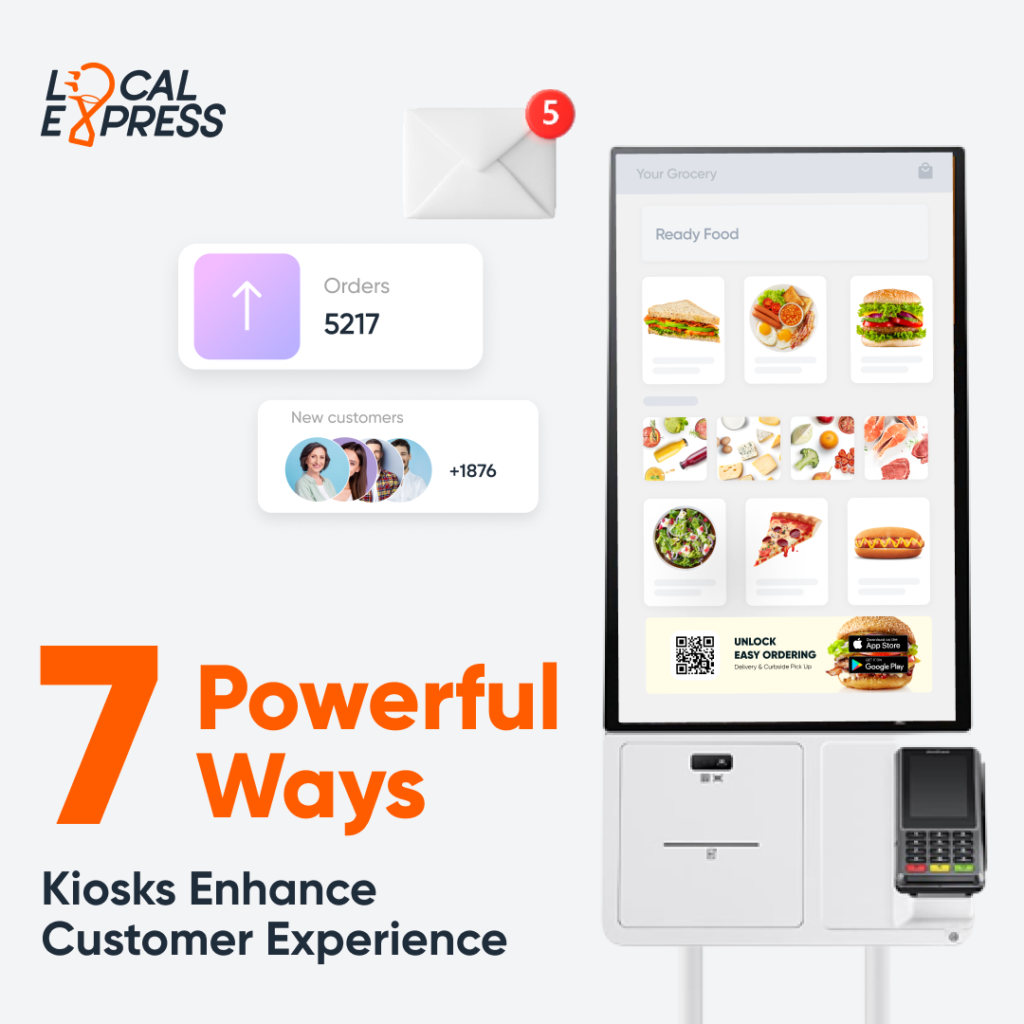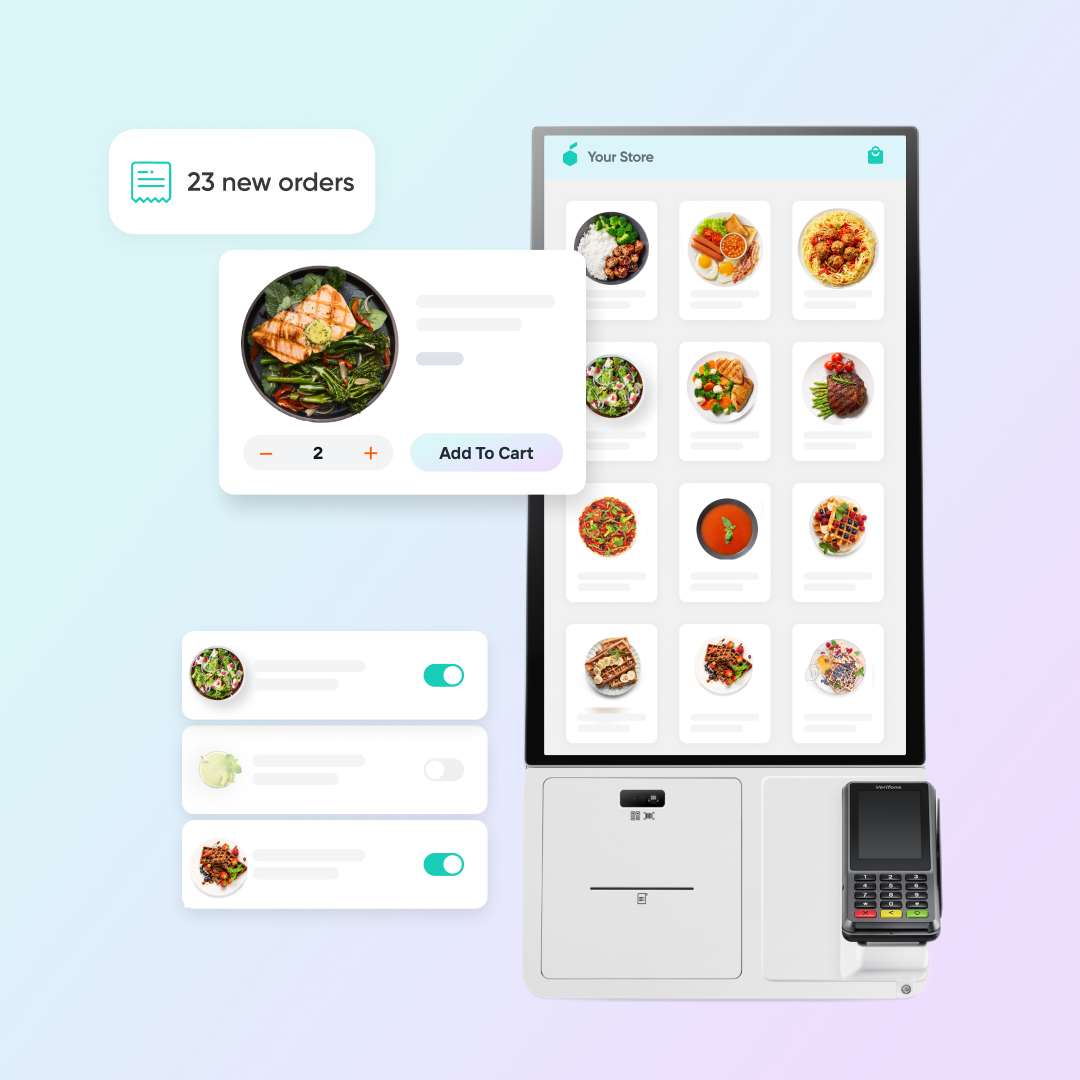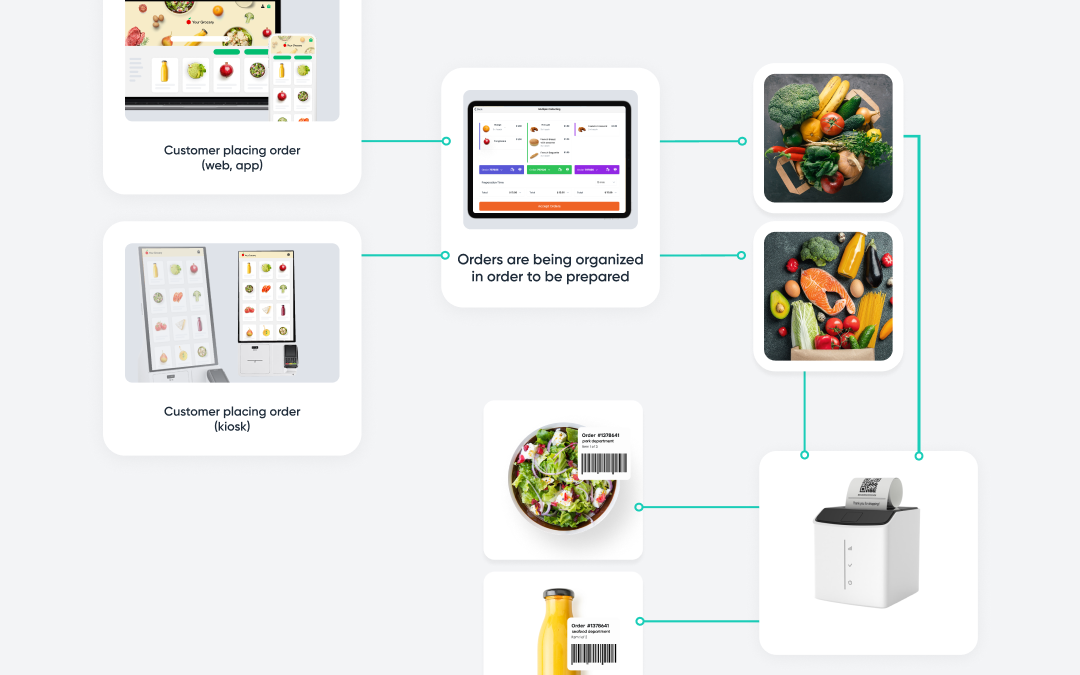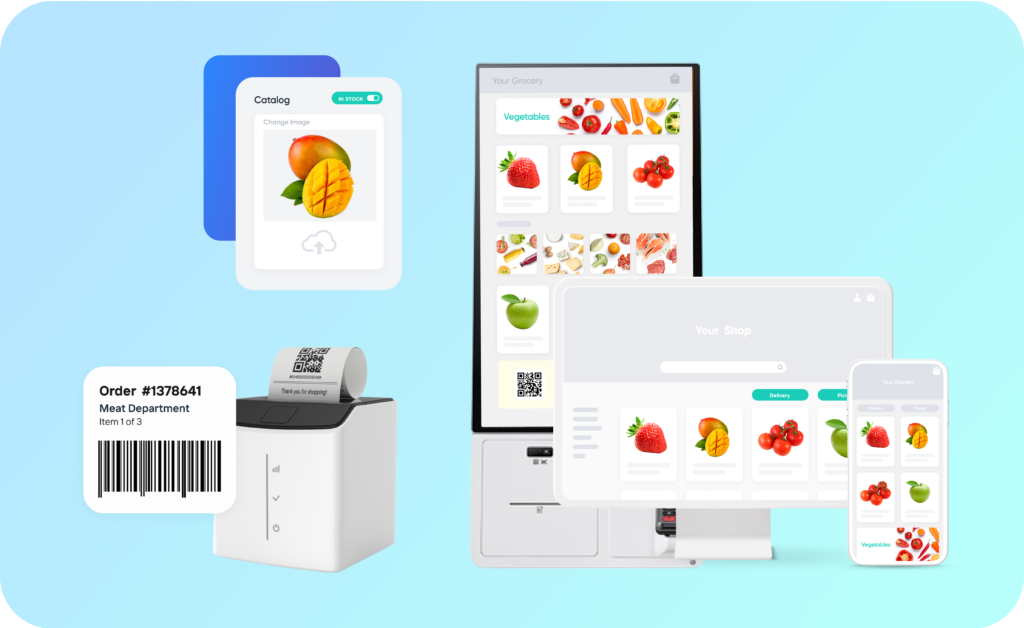
In-store kiosks are fast becoming a familiar part of our daily lives. From ordering burgers to pizza, kiosks have become popular across industries automating tasks you usually need to hire staff for.
Consequently, the humble kiosk has, in fact, become so integrated into our daily infrastructure that it can be hard to spot. We might all easily recognize a kiosk in the form of a supermarket self-checkout machine. However, an iOS or Android tablet can also serve as a mobile kiosk or be fitted in-store with complimentary hardware.
Discover the untapped revenue potential with Local Express’s innovative in-store shopping solution.
This solution offers a means to boost revenue while delivering an exceptional shopping experience that will leave your customers impressed.
Specifically, kiosks create new opportunities for enticing customers to purchase more help personalize product offers, and optimize inventory management.
In fact, kiosks are a key marker in the customer journey. 60% of consumers say they would prefer to use a self-checkout machine. Additionally, 46% say they would like more self-service options, as self-checkouts and kiosks improve their shopping experience.
Let’s take a look at how kiosks can make your customer experience memorable.
Reduce In-Store Waiting Time
Kiosks are a fantastic way to reduce waiting times in-store. Customers can use the self-serve kiosk to order their desired food at the deli and meat sections. After wandering through the store, they can pick up their orders at the deli counter when they are ready.
A kiosk with a digital inventory management system allows customers to quickly check if an item is in stock and place their order—leaving them more time to browse your store.
Furthermore, the technology works across several devices. First, staff members can fulfill the order. After it’s ready, they can send a notification to the customer’s personal device letting them know it’s done. Lastly, the customer can then use a QR code to identify and pay for their purchase.
How Convenient!
Shopper expectations have changed; the food industries established curbside and in-store pickup have become a table stake. Consumers are keen for stores to continue offering services for the fast and convenient shopping experience they create. Kiosks can not only reduce the need for face-to-face interactions but also help to stop lengthy queues from forming.
For example, stores can use kiosks as self-checkout or integrate them with POS, the mobile app, and the web browser. This allows customers to access real-time information on available products via your app or e-Commerce. Because of that, an integrated system is necessary for POS software to drive sales.

Establish Consistent Customer Service
New hygiene concerns have exacerbated people’s preference for using self-service machines. In-store kiosks are a smart investment for stores looking to move with the times and respond to safety worries.
What’s more, kiosks provide a wide variety of automated functions at a consistent level, with less room for possible mistakes from tired or busy staff. They are an easy and dependable way for businesses to provide a reliable service for their customers which leaves more time for staff to work on improving customer experience in other ways.
Whilst automation might be good for some parts of the business, humans are still a valuable asset in ensuring product quality and a friendly smile, as well as analyzing data to look for ways your business can innovate and grow.
Promote Brand Loyalty
The appetite for innovation in the grocery industry is bigger than ever. Customer demand for online ordering options skyrocketed last several years and experts suggest that these new digital shopping trends are quickly becoming a habit.
The reason why people shop at smaller grocery stores is because of the unique ambiance and harmonious shopping experience not provided by larger industry chains. However, independent stores still need to keep up with providing a high-standard shopping experience by making ordering and paying easy, and fast.
A convenient kiosk that reflects your online and in-store branding, promotes brand awareness that keeps customers loyal. It could also be an opportunity for up-selling and own-brand range you may be looking to promote.
By integrating a kiosk module with your POS system, shoppers can get the same discounts or loyalty credits in an app, at the in-store cash-out system, and when ordering in-store meat at the deli section. Kiosks help create an enjoyable and seamless shopping experience that keeps hungry customers coming back for more.

Win Over Customers with Pre-Order Food
Prepared food is a staple for many grocers and food retailers. Customers love being able to pick up a good meal while shopping, and businesses can increase revenue with those impulse buys.
However, providing prepared food is often more complicated than it can seem. With various options, sizes, and customization preferences, setting up and running a prepared food system can get time-consuming. There is a solution though—kiosks.
With in-store kiosks, your customers can order their favorite prepared foods easily. Customizing their order is simple thanks to the kiosk, and that makes things easier for your employees too.
And since in-store kiosks can also upsell products to your customers based on their past purchases, you can increase sales at the same time!

Benefits for Independent Grocers
Independent grocers have a lot of advantages over big chains, despite their smaller size. They can provide unique, personalized, and down-to-earth experiences that you just can’t get at big box stores.
They have disadvantages though, such as their smaller size and limited inventory. That said, kiosks can help independent grocers overcome those challenges and better compete with the big names.
For example, kiosks can help you alleviate check-out times and save money on employee costs. With customers checking out via kiosks on their own, your lines will be shorter and you’ll need fewer lines open at all times.
They can also help boost sales via upselling and suggestions. Kiosks can make sure customers can find the products they want and get recommended products that are a good fit. That in turn boosts sales and revenue while also increasing customer satisfaction.
Customize Customer Experiences
Digital kiosks allow you to harvest valuable customer data. By collecting your customers’ purchasing data, grocers can better predict what their customers will want based on their usual habits.
For example, shoppers can be recommended products related to their past sales. If a customer buys tomatoes, pasta, and basil, the system can suggest the customer add “Parmiggiano” as well, to complement the ingredient list.
Just like that, the software will recommend the users new products based on their past purchases. Automated cart fulfillment and repeat orders keep track of purchasing patterns, predicting customer needs. This in turn increases the likelihood they’ll return.
Technology is a fast-evolving industry and independent grocers have to learn quickly how to keep customers happy if they want to keep up with industry giants. Kiosks will play a large part in creating tailored and enhanced shopping experiences that exceed customer expectations.
Find out more about how a kiosk could work for your business today!






